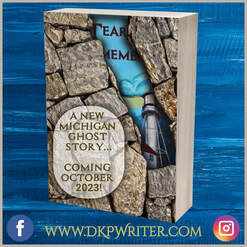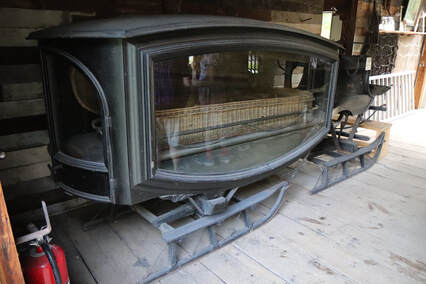 Every writer I’ve ever met is specifically talented. Each has a storytelling gift they generously share with readers. Although none of us ever do it according to the same formula, the final results are equally extraordinary. Like the horses on a carousel, we all travel in the same circles, headed in the same direction (publication), but we travel up and down, speed up and slow down, at our own individual pace, listening to our own internal storytelling song. Each writer approaches their craft in different ways… plotter, hybrid, pantser, discovery writer… we’ve repeated that conversation to the brink of nausea… and yet, somehow, it never grows old. We still find great delight in laughing about where the line is drawn and talking about our process. I’ve found the same is true of how each of us approaches research. Writers either become fully engaged, physically hands-on, sending speeding volleys of questions to museum docents and tour guides, as they hold their breath on deep-dives for their research… or they dig their noses into stacks of books, follow winding and dizzying Internet rabbit holes, and float gently among the pages of tiny little factoid details, filtering out just the right ones to use in a novel. Of course, there are varying degrees of each, and some research processes intermingle. Writers have rules, sure. But mostly we just make it up as we go along. It’s kind of in the job description. For me, the level of enthusiasm I have for research is dependent on a few things; access to real materials and living sources, my interest in the minutia of a particular subject or brand of people, and the weather. When I was a teenager, the library’s old card catalogue was a treasure hunt. As I grew into adulthood, a trip to a museum or re-enactor camp became time travel.  The only time I’ve written a book with scenes focused on the specific details about long winter’s nights, avalanches, the horror of ferocious winds that pelt defenseless humans with armor-piercing sleet, falling into ice-crusted waters and drowning, the almost-instant, slow-motion act of suffocating from the effect of frozen lungs, is with my forthcoming paranormal novel, Tears Remember. This makes sense. It’s a ghost story, set at a lighthouse in Michigan’s Upper Peninsula, in late autumn. These weather conditions seemed like a good environment for a ghost story… after all, only dead people would choose to cling to a place so brutal, right? Still, aside from a visit to the actual lighthouse and about two hours of grilling the docent, the research I did for this book was almost entirely done while sitting in a warm room, staring at a screen, or reading a book that imparted this wisdom of the weather to me, indirectly, so I could then add it to the plot. I haven’t voluntarily sought out more than two inches of snow since I was about fifteen years old, and don’t plan to start again now. [Sign Up To Be An ARC Reader HERE.]  However, other genres invite my inquisitive nature with a presence that requires not only intelligently gathering facts, but also the rest of my senses, too. For Splinters, the western novel I’ve been working on for a few years (with designs to finish it by year’s end), sometimes, it’s more impactful to visit places, talk with people, touch stone and wood, and engage in personal experiences to create richer scenes and the tactile details of a story’s setting. My mind can’t fathom the trials of living in the old west during wintertime, so yes, this book is set in summer. Yesterday, I visited Crossroads Village and the Huckleberry Railroad, on a delightful research excursion.  Did you know that in the 1860s, one of the main ingredients in printer’s ink was soot, collected from the under sides of the caps on gas or coal streetlamps by a child, usually an orphan of about eight or ten years old, apprenticed to the printer, in return for room and board, who was called a Printer’s Devil? True story. Did you know that the steel galley forms printers used to typeset just two pages of a four-page newspaper took twenty hours to set? Each letter had to be set backwards, and in reverse order. The letters were made primarily out of lead (sometimes wood), and when it was ready to run through the press, that galley form weighed seventy-five pounds! Did you also know that the printing presses were manually operated – rarely, steam turbines helped – and printers, because of a propensity for lead poisoning, lived only to their early 50s?  The print room has an odd sulfur odor to it, mingled with the aroma of goopy ink and the old vanilla scent of aged paper. It was tedious, detail-focused, physical work. Were you aware that printers were also reporters? They spent time gathering each story, writing it, and then typesetting the paper, printing and selling it. Printers literally lived submerged in the written word. Newspapers were published when there was news, usually monthly; although less frequently in winter… no surprise there. There is an echo just outside the print shop. It comes from the sound of hard boots striking the wood-planked sidewalks down main street. Like docks in a marina, these wooden walkways kept feet and dress hems out of the rain and mud; or at least, that was the intent. Not far off, I heard the bell and the whistle from the train as it stopped at the depot, a few doors down, dropping off visitors and perhaps new neighbors, coming to settle and make a life for themselves and their families. Steam chuffs through the stack on the engine like the contented sound made by a tiger as it surveys its land, pleased that there is plenty of sustenance to fend off winter nights. This was my first introduction to this town… an exciting train ride that separated me from the modern world and inserted me back in time… to refocus my perspective on life and living.  Around the corner is the small doctor’s office where, a nurse tells me, if a man wanted a divorce from his wife, he simply took her to the local physician who administered a test that comprised an unsolvable glass puzzle. Think monkey fist in a bottle. Because she was unable to solve it, she would be quickly diagnosed to have some sort of dementia or neurosis and she was sent to the nearest sanitarium. Her husband would then be free to marry another woman and deny his original wife any money or property to save herself. Few women subjected to this treatment ever repaired their lives. I spoke with the man at the tack and hearse shop, who was just as baffled as I was at the reasons behind why the cast iron sled hearse (used in wintertime) had windows on all sides, from which you could get a clear view of the casket. The better to verify the dead body was actually dead, perhaps? Oh, and the man who crafted these hearses… in the off-season (is there an off-season for death?), he tinkered with tin, making Christmas decorations for the town, and toys for the children. Now that’s career cross-pollination if I’ve ever heard it! This space had a distinctive barn-dust covering all the leather saddles and bridles, and the aroma of soot and wicker (from the caskets) competed for my attention. Again, the loud clomp, clomp of boots on wood-planked floors echoed through the room’s high ceiling.  As I walked through this tiny town, I got a real sense of community. I could easily imagine the dirt streets filled with horse-drawn buckboards. I could see the women in their long gingham dresses, layered with white aprons walking from the dry goods store back to their homes, carrying baskets of supplies, talking affably about what dishes they would share at the town Matriarch’s birthday party that coming Sunday, or how their youngest was teething, keeping the entire household awake some nights. The joy I find in hands-on research for my writing projects is akin to riding a wooden horse on the outside circle of a hundred-year-old carousel. It invigorates my senses in ways I haven’t felt since childhood. The pure excitement of that tactile experience makes me sigh in reflection, stirs the fire of my inquisitive nature, and makes me giggle from the exhilaration of the overload of sights, sounds, smells, and vibrations running through my mind, body, and soul. This is how I most enjoy writing research; becoming fully immersed in the moments, pulling myself away from reality, but still able to recall all the tiniest memories when sitting at my desk.  However, just like that carousel ride, the time passes by much too quickly. I’m grateful for people like my new friend, Walt, who keeps those memories alive and is enthusiastic about sharing them with me and the others who visit. For each moment I spend in tactile research, my writing is more accurate and joy-filled. It is my hope that those sensations reach my readers, too.
0 Comments
Leave a Reply. |
WelcomeYou'll find some interesting stuff here... some Op Eds, some Information, Book Reviews, and More. Poke around the categories and see what ruffles your feathers... in a good way! Archives
July 2024
Categories
All
|
 RSS Feed
RSS Feed